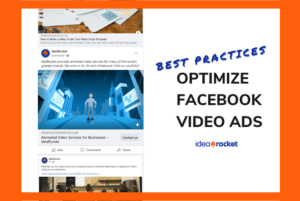You want every visitor to your website to see the new explainer video for your product or service. That’s why you decided to embed that video on your homepage. Smart move. Now the question is, should you set it to autoplay?
Autoplay video starts the moment a visitor lands on your page. The approach has some advantages: it makes your content unmissable, may keep visitors on the page longer, and can make the watch experience feel seamless. Of course, it also has its drawbacks. We’ve all had the experience of scrambling for the back button to stop unexpected audio.
Despite its pitfalls, autoplay can be effective if done well. That’s why so many social media platforms are embracing it. Let’s look at how you can use autoplay to your best advantage.
Why choose autoplay videos
There’s no doubt that autoplay has its drawbacks, but many content creators still choose to use it because of the benefits it can deliver. Benefits like:
1. The element of surprise
In our modern world of on-demand media, we’re used to engaging with content exactly when and where we want to. Whether we’re opening a book, queueing up a podcast, or streaming our favorite show, we’re in control of when the experience starts and ends. Autoplay flips that script by starting up content as soon as we arrive. Injecting the element of surprise can invite your audience to explore more.
2. Grabbing audience attention
Autoplay is the next stage of the battle for audience views. As people get better at tuning out or avoiding advertising, autoplay can be a way to snag a sliver of their attention. They might not click on a video advertisement on purpose, but if it starts to play you might have a chance to capture their attention.
3. Ease of use
Autoplay saves visitors the trouble of clicking. If they came to the page to see a video, why make them go through extra steps? Just serve them exactly what they came for.
The drawbacks of autoplay videos
Of course, it’s never a good idea to focus only on the positive aspects of a technology and ignore the negatives. Before choosing autoplay, you should consider its drawbacks as well.
1. Not everyone likes surprises – especially noisy ones
Content bursting forth without your consent can be annoying. Especially if it comes with loud music or voiceover that blares unexpectedly into your quiet office. It robs users of the autonomy to direct their attention, and many see that as a bad thing.
2. People really are good at avoiding ads
Research has correlated video with the rising use of ad blockers. PageFair’s 2017 Adblock Report found that interruptive ad formats were one of the leading motivations for adblock use. While the 2020 edition of the report found that the rise of mobile is leading to a decline in ad blocking, people are pretty good at tuning out what doesn’t interest them. That can include autoplay videos.
3. You lose a datapoint
If you set a video to autoplay you can’t tell if customers were interested enough to click. You can probably still collect data on how long they watched, but that doesn’t tell you about the effectiveness of your thumbnail or headline. Plus, there may be some viewers who would have watched if they’d had the choice but bailed because of loud music or other surprises.
Should you join the autoplay revolution?
Digiday called autoplay video the Most Hated Digital Ad Tactic. Ask ten random people on the street whether they’re in favor of videos playing automatically, and you’ll probably hear a lot of nos. Yet many social media platforms including YouTube, Facebook, Instagram and Twitter have enabled autoplay by default. Then there’s Netflix, where video previews autoplay as you’re trying to read the show description.
What gives? If users hate autoplay video so much, why are huge content platforms still doing it?
It might seem like a case of platforms not listening to what users want, but it’s actually more complicated than that. When users complain about autoplay, it’s usually because a website has focused only on the pros and failed to correct for the cons.
You can avoid this fate by learning from what social media platforms and other big content producers are doing. Many platforms have introduced tools and settings that enable some of the benefits of autoplay video without annoying users in the process. For example, pretty much every social media platform allows users to shut off autoplay by adjusting their settings. Others default to mute when videos autoplay.
You may have noticed that on Facebook, you have to click on a video to make it play sound, but once you do, other videos you come across will play with sound as well. You might adopt similar settings on your own website.
Best practices for Autoplaying videos
If you do decide to autoplay videos on your website, a few best practices will help you keep visitors happy:
- Autoplay without sound – A moving picture will catch your eye, but blaring sound will send you scrambling for the stop button. Set your videos to autoplay without sound. And remember to include captions.
- Offer an easy escape – The back button is easy to find. Your escape route should be even easier. Include a button, or scroll feature that allows users to bail out quickly without leaving the page.
- Only autoplay what is relevant – If your video offers the information or experience that users were looking for, they won’t mind that it autoplays. Before you set a video to play on entry, make sure it’s exactly what visitors were looking for.
You’ll notice that we follow all three of these practices with the highlight reel that plays on the IdeaRocket homepage. You can see the “sound on” option in the screenshot below, as well as clear instructions for someone who wants the video to stop playing.

The bottom line is this: Autoplay is neither good or bad, but thinking makes it so. If you’re thoughtful about how you use this tool, you can gain the benefit of the pros without subjecting your website visitors to the cons.
Contact our video experts at IdeaRocket to start making a video that’s worth autoplaying.




